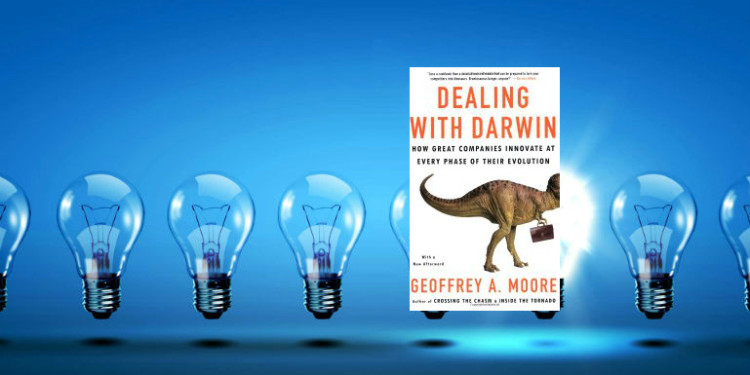Four outcomes of innovation

Dealing with Darwin: How Great Companies Innovate at Every Phase of Their Evolution by Geoffrey Moore
Differentiation
In the first chapter of Dealing with Darwin Geoffrey Moore, author of the classic Crossing the Chasm, writes about the dynamics of innovation. He begins by identifying the primary motivation behind innovation: differentiation. In the absence of innovative products and services, offerings in the marketplace become commodities and compete purely on price. Innovation is what creates differentiated offerings and allows for attractive economic returns.
In addition to differentiation, there are three other outcomes from innovation: neutralization, productivity and waste.
Neutralization
The goal of neutralization is to eliminate negative returns. The mantra of neutralization is “seek good enough, not best in class.” Neutralization strategies aim to slow down competitors and decrease the amount of head start a competitor has in the market. The less time your competitor has as an exclusive provider, the less momentum they can generate. Examples of this outcome are SUVs (nearly all automotive manufacturers have an SUV as part of their lineup). Moore notes that “first in class, when not first to market does not earn results commensurate with the investment required.”
Productivity improvement
Productivity improvement is, for Moore, “essential to evolutionary adaptation because it frees resources that other forms of innovation can use.” A productivity outcome creates products or services in the market at a lower cost. As costs are saved, the freed up resources can be applied to other innovation initiatives.
Waste
Waste consists of three individual outcomes. The first is simply failure. Moore views this as a part of doing business. He says “if you lose a lot of bets, you probably ought to look into your betting process or change your bettors.” The second type of waste is over optimization, what Moore terms as “efforts that go [too far] beyond the neutralization goal.” But this is not the worst kind of waste. The worst kind of waste are successful projects which achieve differentiation of some sort, but don’t go far enough along the continuum of differentiation. He calls this “innovation underperformance” and asks the reader to try and recall a Chevrolet sedan from the past ten years. Then he contrasts Chevrolet with Chrysler PT Cruiser or a Corvette (all memorable cars even if you don’t care for their design).
Innovation underperformance
Risk reduction mentality and lack of corporate alignment are to blame for innovation underperformance. Risk reduction is intended to sustain the status quo and existing environment. Moore calls this context. “There are penalties for failing to execute context properly, but no reward for performing it brilliantly. So there is no upside to warrant taking risk” writes Moore. Core, on the other hand, is a type of innovation that creates differentiation.
Core innovation
To succeed with core, you must take your value proposition to such an extreme that competitors either cannot or will not follow. That’s what creates the separation you seek.
Moore goes on to give examples of core innovation that were achieved with corporate alignment. He notes that in most companies, innovation efforts are isolated in separate business units and do not have the alignment necessary to create unassailable products and services. In these cases, “each of the breakaway companies is aligned end to end around a single value proposition.”
The failure…lies in the [inability] to prioritize a one line of innovation above all others.
Focus and prioritization
Moore comes back to focus and prioritization as the two pillars of success in innovation.
In order to break away, we must overcome risk-reduction mentality and lack of corporate alignment. Neither is a natural act.






